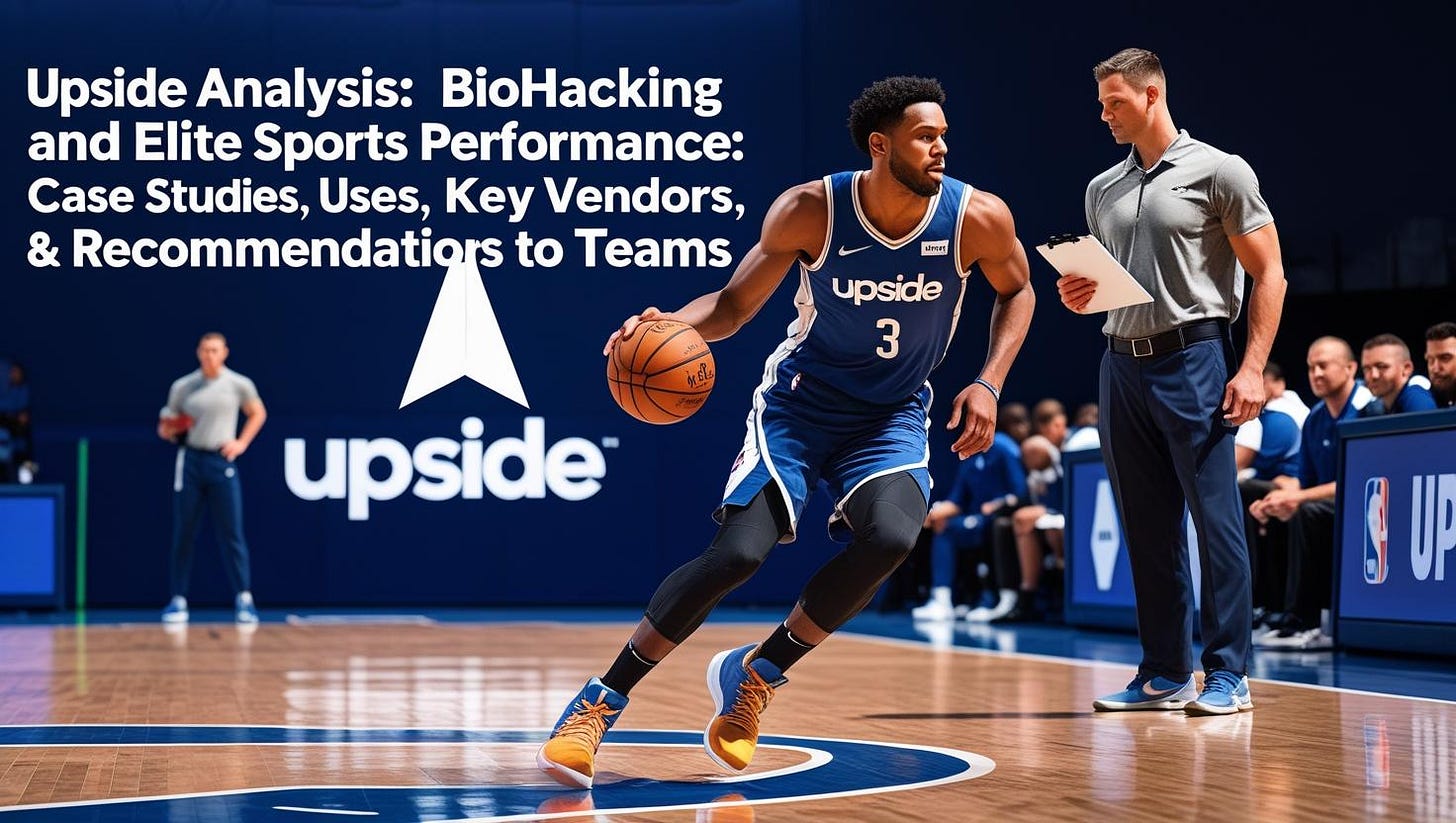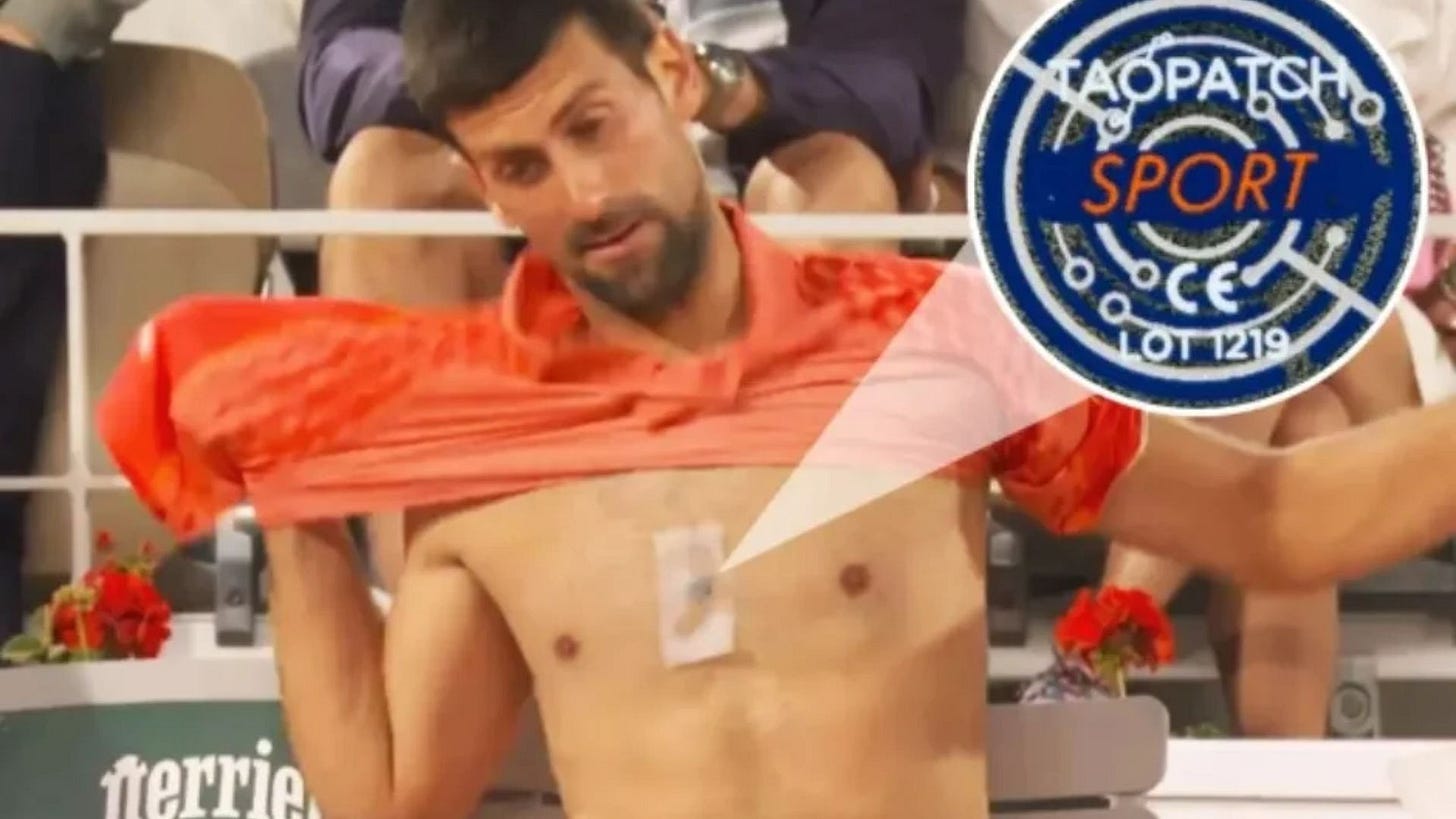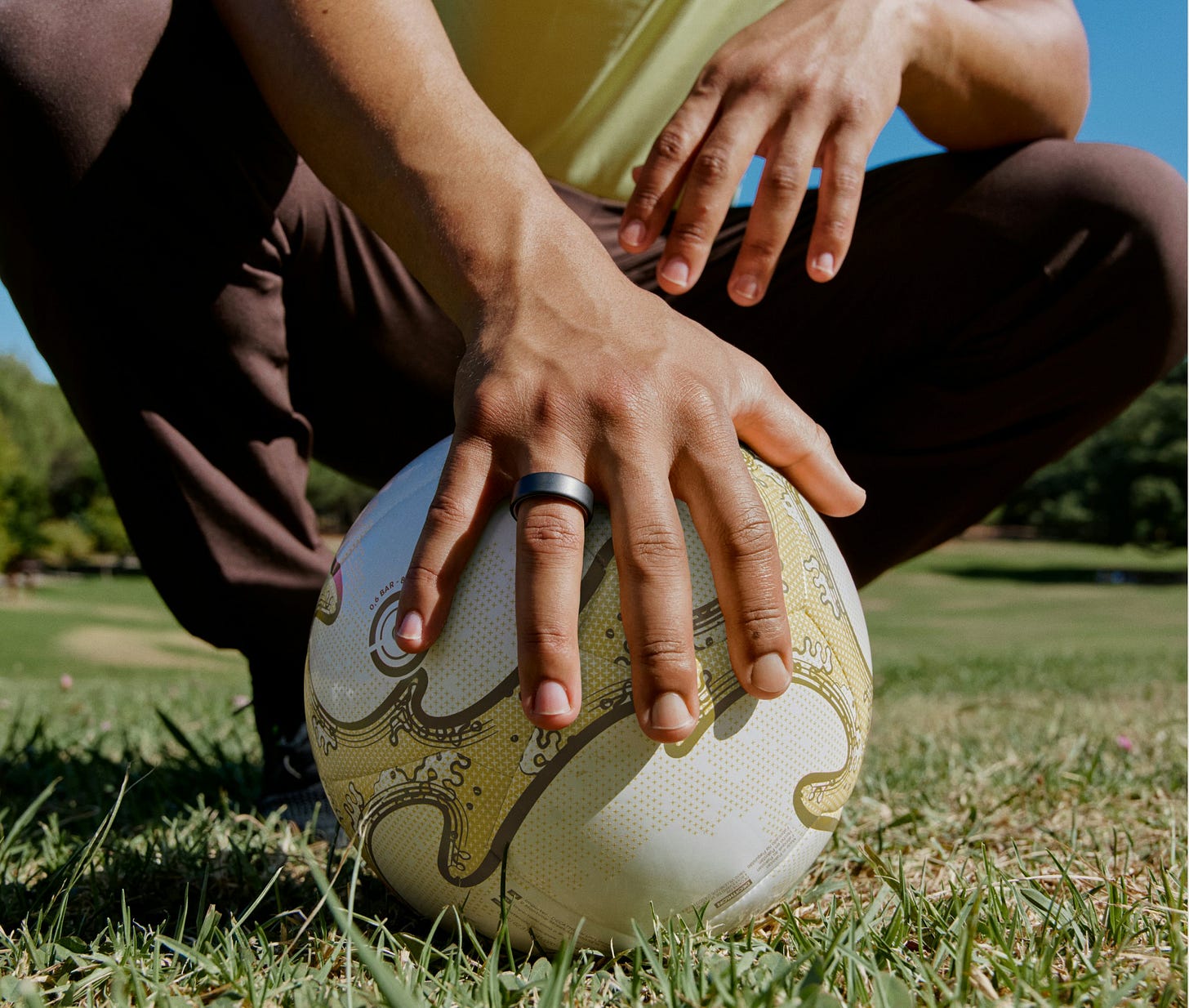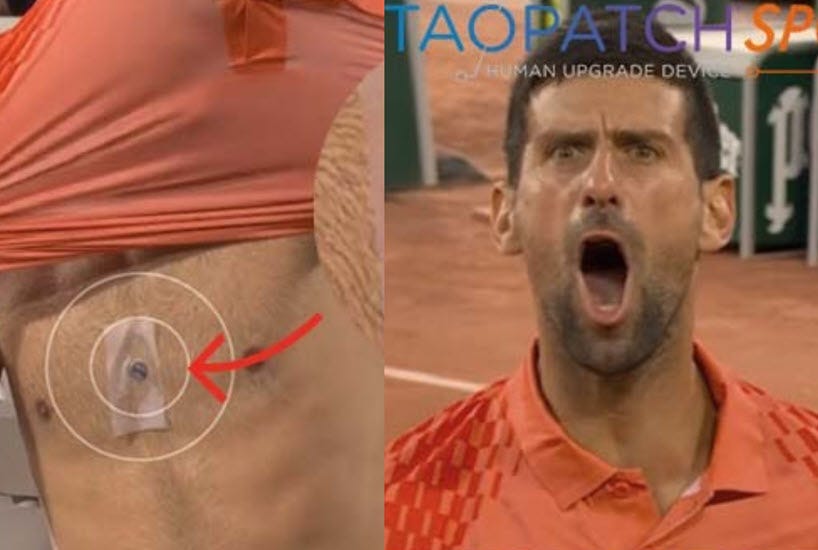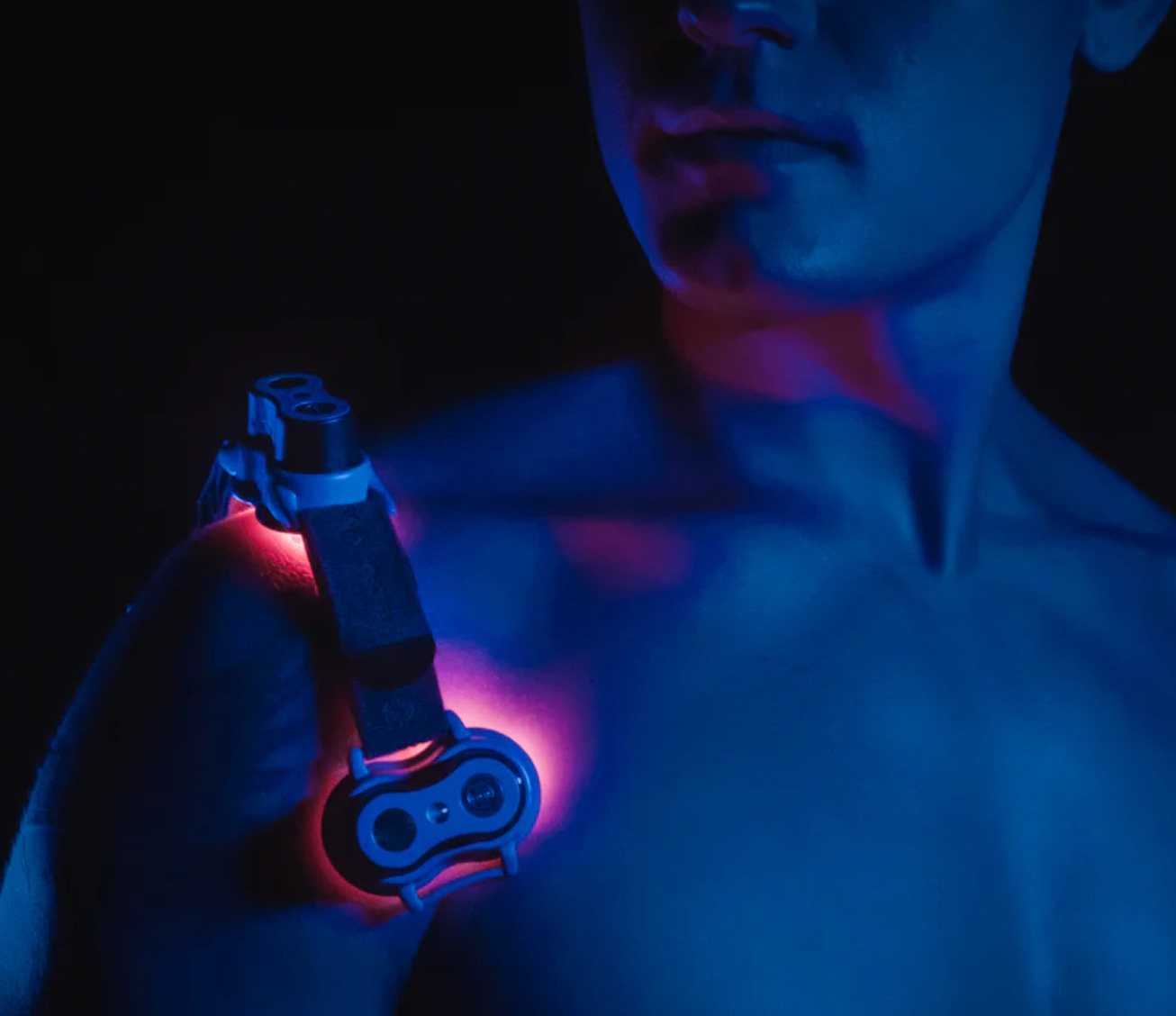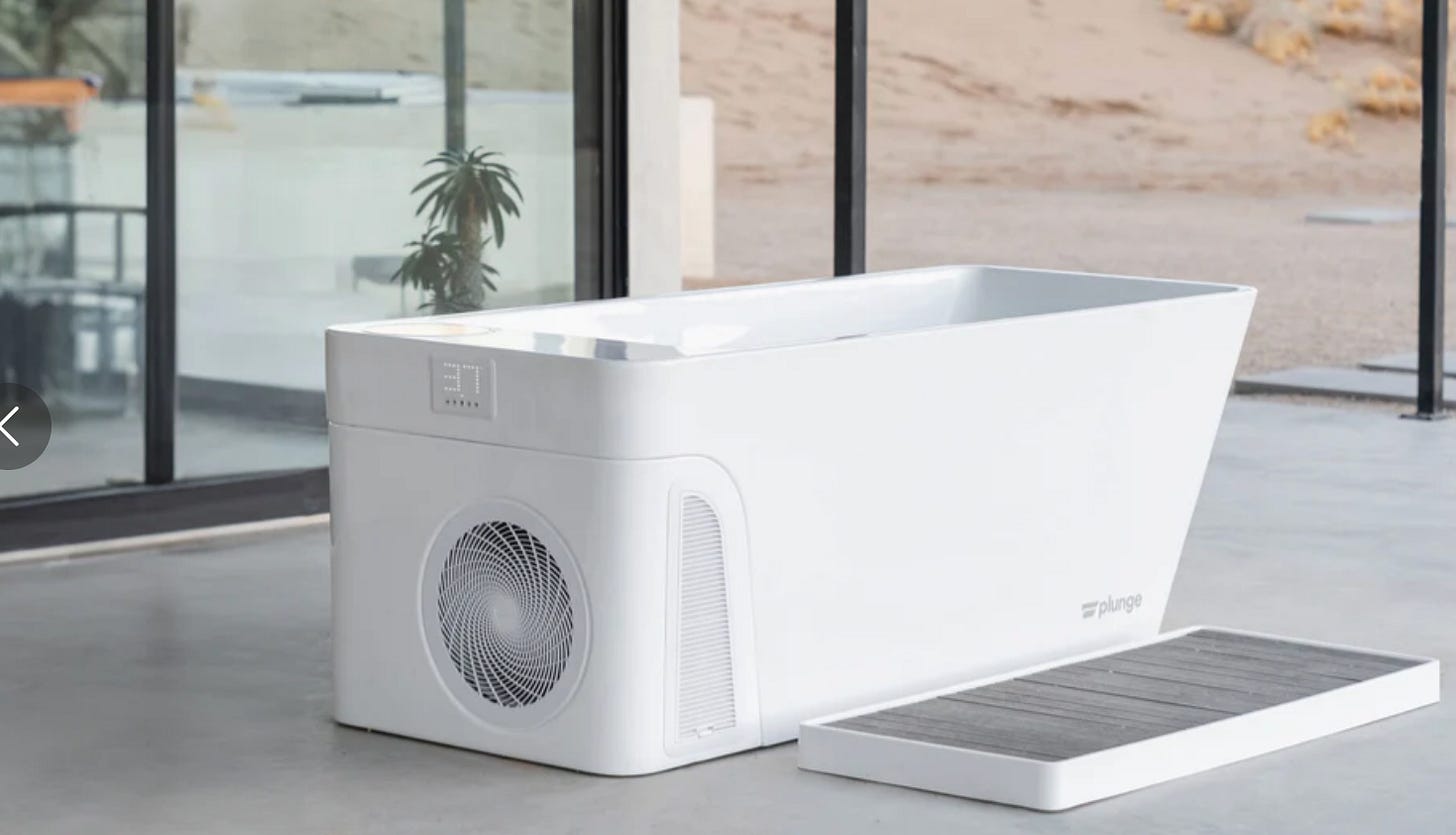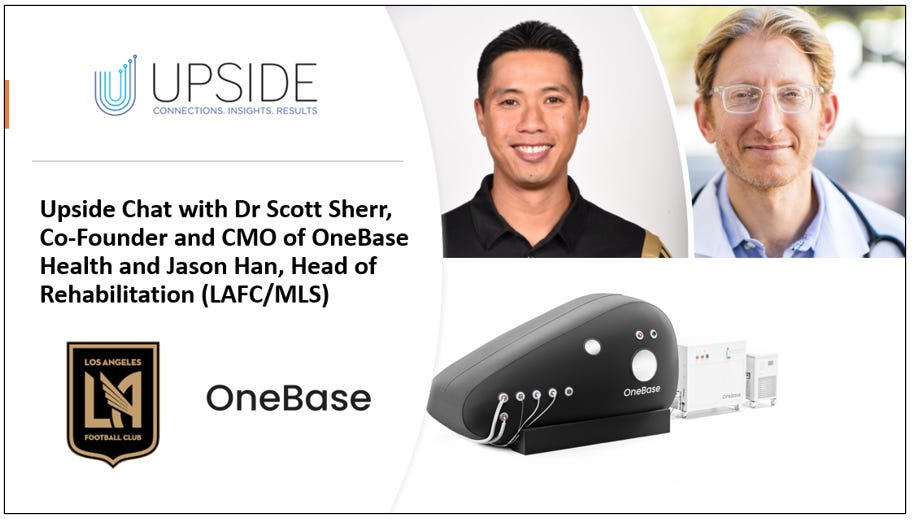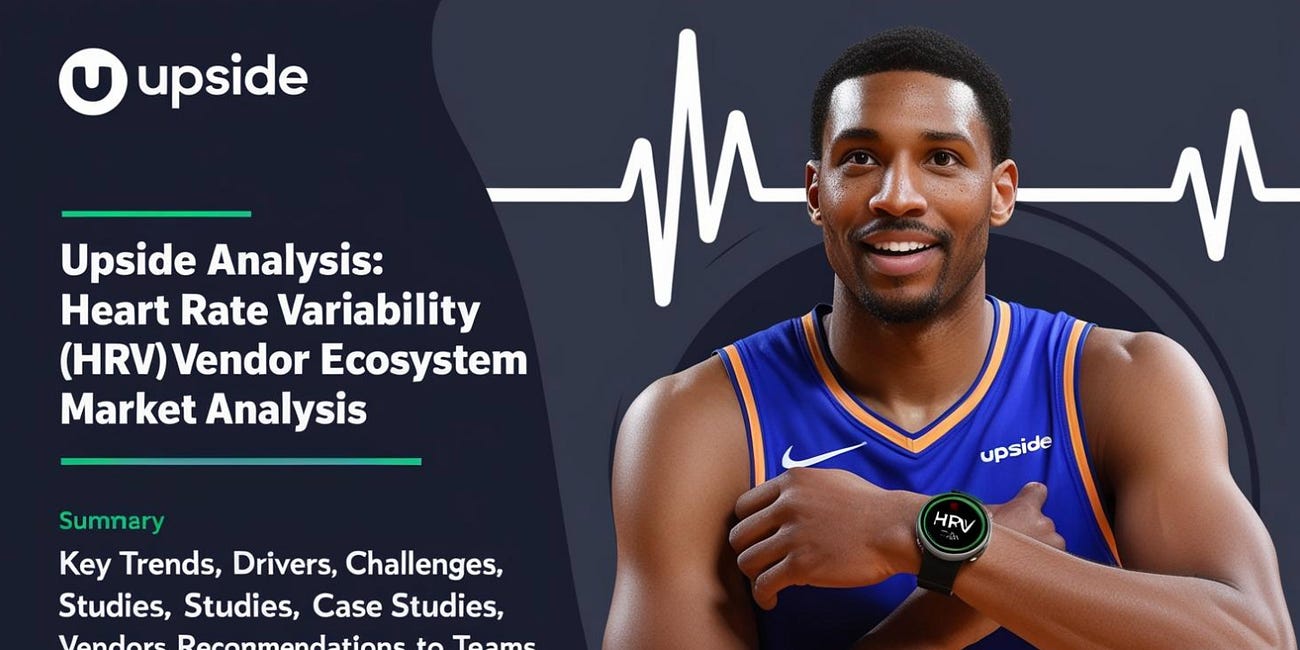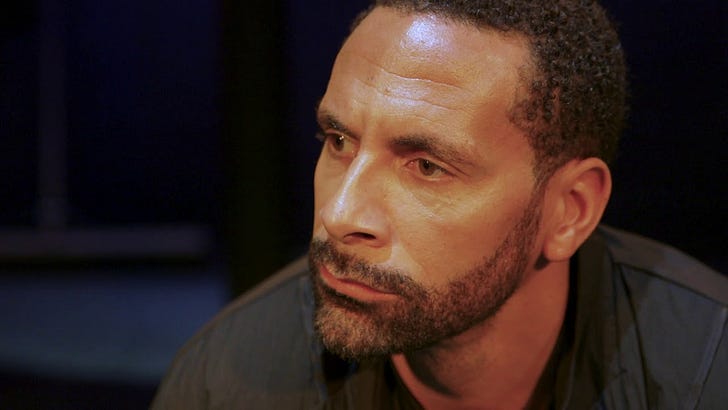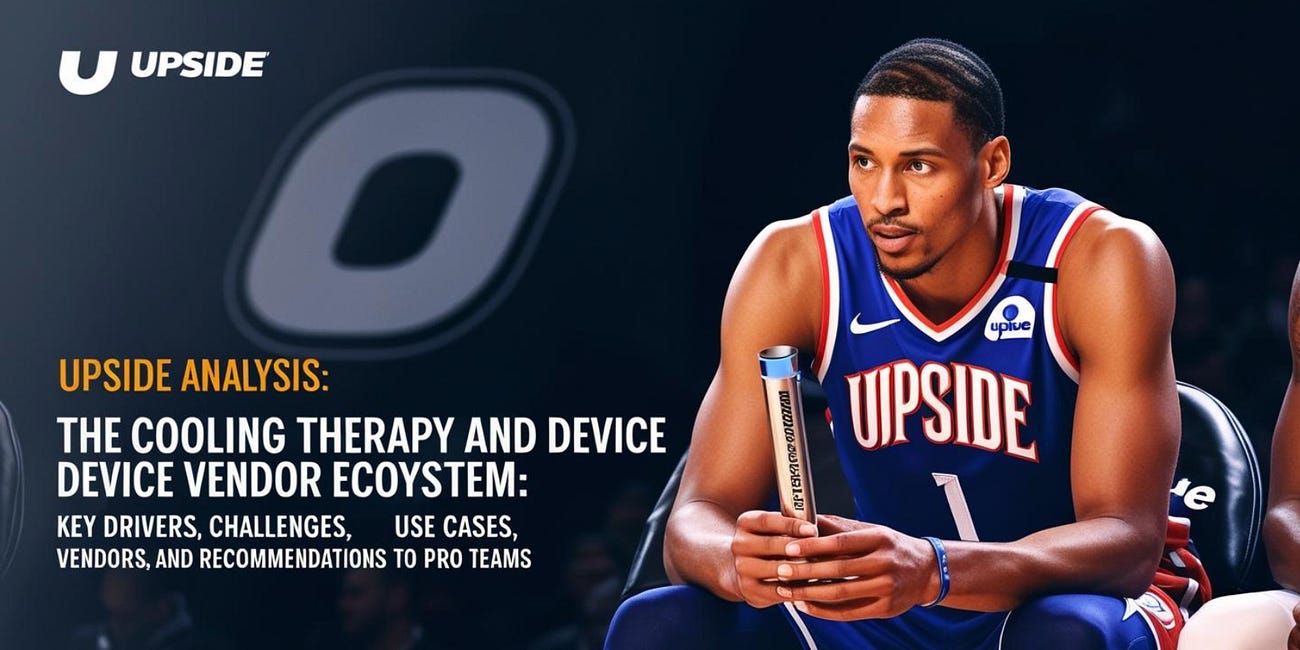🧬 Upside Analysis: Biohacking and Elite Sports Performance: Case Studies, Use Cases, Key Vendors & Recommendations to Teams
The evolution of elite sports is no longer defined solely by strength, speed, or even data analytics—it's increasingly shaped by precision health and performance personalization. At the center of this movement is biohacking: the art and science of optimizing the human body using biology, technology, and data-driven interventions.
Whereas traditional performance optimization focused on training volume and nutrition, biohacking introduces granular control over the body’s systems—sleep cycles, brainwave states, glucose variability, inflammation markers, hormonal regulation, and more. The result is not just better performance, but sustainable performance longevity, reduced injury risk, and enhanced cognitive resilience.
Elite franchises across the NFL, NBA, NHL, MLB, and Olympic programs are investing millions into technologies and protocols once considered fringe—now validated by both peer-reviewed science and competitive success.
Key Stats: Scientific Backing for Biohacking Techniques
(1) Sleep optimization: In a 2011 Stanford sleep study titled "The Effects of Sleep Extension on the Athletic Performance of Collegiate Basketball Players, collegiate basketball players extended their nightly sleep over a period of five to seven weeks, aiming for at least 10 hours in bed each night. The results showed a significant improvement in sprint performance, with times decreasing from 16.2 seconds at baseline to 15.5 seconds after the sleep extension period, which is approximately a 4.3% improvement. This study,
(2) Red light therapy: A 2016 study published in the American Journal of Physical Medicine & Rehabilitation investigated the effects of light-emitting diode therapy (LEDT) on muscle performance. In this case-control study involving monozygotic twins, one twin received LEDT while the other received a placebo, both combined with a 12-week strength-training program. The study found that LEDT led to improvements in maximal load, reduced fatigue, and decreased markers of muscle damage and soreness compared to the placebo.
(3) Cold water immersion: Peake et al. (2017): This study here compared the effects of cold water immersion and active recovery on inflammation and cell stress responses in human skeletal muscle after resistance exercise. The results suggested that cold water immersion is no more effective than active recovery for minimizing the inflammatory and stress responses in muscle after resistance exercise. This meta-analysis here examined the effects of cold water immersion on recovery from strenuous exercise. The findings indicated that cold water immersion reduces muscle soreness at 24, 48, 72, and even at 96 hours after exercise compared with passive treatment.
(4) Continuous glucose monitoring (CGM): It can help improves endurance performance through better carbohydrate timing and metabolic flexibility. Research indicates that CGMs can help athletes understand their glucose dynamics during exercise, potentially leading to improved energy management. For instance, a study published in Sensors discusses the potential applications of CGM in healthy adults, including athletes, for health care and sports performance. Similarly, an article from Levels Health explores how CGM data can guide fueling strategies for peak athletic performance.
(5) HRV training & Load management: A 2017 consensus statement titled "Monitoring Athlete Training Loads: Consensus Statement" discusses the importance of monitoring training loads to prevent injuries. The statement emphasizes that appropriate load management can help in reducing the risk of injury.
(6) Neurofeedback: Some studies here have explored the effects of neurofeedback on cognitive functions. For example, research on EEG biofeedback training has shown improvements in visual reaction time among athletes, indicating potential benefits for cognitive performance.
Case Studies: Athletes Using Biohacking Successfully
LeBron James (NBA)
Biohacking Stack: Red light therapy, cryotherapy, hyperbaric oxygen, custom sleep pods, DNA-based nutrition.
Results: Competing at elite levels in his 21st NBA season; minimal injury history; $1.5M/year personal body optimization budget.
Here is a video showcasing Lebron James using an hyperbaric oxygen chamber:
Tom Brady (NFL)
Interventions: Anti-inflammatory diet, myofascial pliability, sleep discipline, breathing routines, personalized supplementation.
Outcome: Played to age 45 with peak performance, minimal injury downtime, 7 Super Bowls.
Here is a video interview of Tom brady talking about his fitness tips and how he has been able to improve his fitness over the years:
Novak Djokovic (ATP)
Protocols: Gluten-free, red light therapy, breathwork, intermittent fasting, HRV tracking, nanotechnology (Taopatch).
Result: Record-breaking longevity in tennis with minimal injury interruptions and mental resilience under pressure.
Here is a video interview of Novak Djokovic talking about his diet:
Here is a picture of Novak using Taopatch a nanotechnology device using acupuncture without needles) and red light therapy which helps Novak’s mitigate pain, improve his balance and give him a boost of energy. Here is an article talking about Taopatch. You can check the podcast interview we did with the CEO of Taopatch:
🔥Upside Chat: Upside Chat with Dmitri Leonov, CEO of Taopatch USA, a Wearable Nanotechnology Device Combining Light Therapy with Acupuncture.
This week, we have the honor to interview Dmitri Leonov, CEO of Taopatch USA, a wearable nanotechnology device that combines light therapy with acupuncture.
Cristiano Ronaldo (Soccer)
Tools: Cryotherapy, red light therapy, biphasic sleep schedule, electromagnetic stimulation.
Result: Playing at elite level into his late 30s with elite VO2 max, body composition, and consistent match appearances.
Here is a video talking about Ronaldo’s workout and diet:
Sue Bird (WNBA)
Strategies: Sleep prioritization, mindfulness, breathwork, HRV monitoring.
Result: Played 20 years in the WNBA with elite performance consistency and leadership.
Here is a video interview of Sue Bird about her workout:
Use Cases for Teams: Where Biohacking Adds Value
A. Injury Prevention & Recovery
Combining HRV, muscle oxygenation, and sleep trends to dynamically adapt training loads.
Example: Premier League clubs using red light and neuromuscular biofeedback to speed soft tissue recovery.
B. Travel Recovery & Circadian Alignment
Protocols using melatonin, red/blue light exposure, magnesium, breath control to speed jet lag recovery.
MLS and NHL teams use customized recovery kits tailored to east-west travel schedules.
C. Sleep & Readiness Monitoring
Teams now implement personalized chronotype training plans; optimize game-day timing by circadian mapping.
Example: Olympic federations now measure deep sleep delta wave activity as a performance predictor.
D. Brain Performance & Focus
Neurofeedback, binaural beats, and HRV breathing protocols to improve decision-making and emotional regulation.
Neurostimulation used for flow state access in penalty shootouts or high-stress competition.
E. Nutrition & Supplementation Personalization
Microbiome and DNA testing used to deliver individual supplement stacks and anti-inflammatory meal plans.
Reduces GI distress, improves recovery, and supports hormonal balance.
Vendor Landscape
Here is a list of vendors in the biohacking space. This list is not meant to be exhaustive.
Levels Health
Levels Health specializes in metabolic monitoring, offering insights into real-time glucose levels and metabolic efficiency. This service is particularly beneficial for endurance athletes and professional teams looking to optimize their nutrition and performance. By providing continuous data on how food and activity affect blood sugar, Levels Health empowers users to make precise adjustments for better health outcomes. Visit levelshealth.com for more details.
Whoop
Whoop offers a wrist-worn strap that continuously measures HRV, heart rate, strain, sleep, and recovery metrics, tailored especially for athletes and health-conscious users. Its business model focuses on a monthly or yearly membership subscription rather than selling the hardware itself. Whoop is widely used in professional sports leagues and by high-performance teams globally. You can learn more at whoop.com.
Oura Ring
Oura created the Oura Ring, a compact smart ring that tracks sleep quality, HRV, body temperature, and daily readiness scores with strong nighttime precision. It's extremely popular among biohackers, athletes, and corporate wellness programs. Oura has positioned itself as both a consumer brand and a potential clinical data platform in the future.More information is available at ouraring.com.
Taopatch
Taopatch is a nanotechnology wearable device that uses nanocrystals to convert body heat into therapeutic light. This light targets specific acupuncture points and meridians to improve posture, balance, movement, and cognitive function. It's used by athletes, individuals seeking enhanced mental clarity and endurance, and those managing long-term conditions, with notable users like Novak Djokovic. Taopatch aims to stimulate the body's natural healing processes and optimize performance without chemicals. Learn more at taopatch.com.
Kineon
Kineon is a leading innovator in light therapy solutions, dedicated to enhancing pain management and recovery. 1 Their flagship product, the MOVE+, is an FDA-registered, medical-grade laser device renowned for its portability and clinically validated effectiveness. 2 Combining red and infrared light therapy, the MOVE+ reduces pain and inflammation, making it a popular choice for athletes, busy professionals, and anyone seeking to optimize their recovery. 2 In 2025, Kineon partnered with Flex, a health and wellness payment solution, to make their cutting-edge technology more accessible and affordable. 3 This collaboration allows customers to conveniently use their Health Savings Accounts (HSAs) and Flexible Spending Accounts (FSAs) to purchase Kineon's innovative 4 products, further solidifying Kineon's commitment to empowering individuals to take control of their health and well-being. Discover their products at kineon.io.
Pictures: Kineon
Thorne
Thorne provides personalized supplements and testing based on individual DNA, blood biomarkers, and microbiome analysis. Their tailored approach helps teams and individuals, including UFC, MLS, and Olympic athletes, address specific nutritional needs and optimize their health. Thorne's commitment to high-quality, science-backed products aims to enhance performance and overall well-being. Explore their offerings at thorne.com.
Neuropeak Pro
Neuropeak Pro focuses on cognitive optimization through EEG neurofeedback, breath training, and stress resilience scoring. This vendor targets users like quarterbacks and hitters, particularly in the NFL and NHL, to enhance mental performance and focus under pressure. Their programs are designed to improve cognitive function and emotional regulation for peak performance. Learn more at neuropeakpro.com.
Here is a video testimonial showcasing Kirk Cousins talk about how he uses Neuropeak Pro.
Red Light Rising
Red Light Rising offers modular full-body red/NIR light therapy devices for recovery and hormonal optimization. Their products are utilized in training rooms and private gyms, catering to clients in the EPL and general fitness enthusiasts. Red light therapy is known for its benefits in muscle recovery, reducing inflammation, and supporting hormonal balance. Discover their products at redlightrising.co.uk.
Plunge
Plunge provides cold exposure solutions, featuring 39–55°F cold tubs with app control and ozone filtration. These cold plunges are popular among teams and gyms, including those in the NBA and CrossFit Games, for their benefits in athletic recovery, reduced inflammation, and improved mood. The controlled environment allows for consistent and effective cold therapy sessions. More information can be found at thecoldplunge.com.
OneBase Health
OneBase Health is a wellness technology company specializing in advanced Hyperbaric Oxygen Therapy (HBOT) solutions designed for in-home use. Founded in 2020 and headquartered in Hong Kong, OneBase offers a range of high-quality, portable hyperbaric chambers—such as the Pro, SitUp, and Mod models—tailored for athletes, biohackers, and health-conscious individuals seeking to enhance recovery, reduce inflammation, and improve cognitive and physical performance. Complementing its hardware, the company provides the OneBase Health app, which delivers curated, medically guided protocols developed under the leadership of Dr. Scott Sherr, enabling users to optimize their wellness routines by integrating HBOT with other modalities like red light therapy. OneBase's mission is to empower individuals to take control of their health journey through innovative technology and personalized support. More informaiton can be found at https://onebasehealth.com
⭐Upside Chat with Dr Scott Sherr, Co-founder and CMO of OneBase Health, and Jason Han, Head of Rehabilitation (LAFC / MLS), On Hyperbaric Medicine
Today we have the honor of interviewing again Jason Han the head of rehabilitation for the LAFC, a top MLS team. Jason is joined by Dr. Scott Sherr, an hyperbaric medicine doctor and co founder and Chief Medical Officer of OneBase Health.
Biostrap EVO
Biostrap produces wrist and ankle wearables designed for precision health monitoring, including sleep, HRV, blood oxygen, and respiration rate. They position their ecosystem for clinical research, elite sports, and health optimization rather than mainstream fitness tracking. Biostrap devices aim for near-medical-grade data accuracy validated in third-party studies. More information can be found at https://biostrap.com/
The Future of Biohacking in Pro Sports
1. Convergence with AI and Predictive Health
Biohacking data will feed machine learning algorithms to forecast injury risk, burnout, and optimal training cycles.
2. Genetic and Epigenetic Programming
Teams will routinely use genotype profiles to tailor players’ diets, recovery plans, and training thresholds.
3. Mental Health + Performance
Expect wider adoption of digital psychedelics, VR biofeedback, and wearable mood-state regulation tools.
4. Hormonal Monitoring and Manipulation
Hormone tracking via saliva and blood spots may soon inform readiness-to-train decisions on a daily basis.
5. Virtual Coaches & Micro-Recovery Stations
Locker rooms will host integrated biohacking pods (sleep, neurotherapy, red light, cold exposure) for real-time use.
Recommendations to Teams
Immediate Steps
Appoint a Director of Biohacking or Human Optimization to oversee interventions across departments.
Build a Biohacking Lab within training facilities with modular cold tubs, light therapy, neuro stations, and sleep pods.
Run team-wide baselines using HRV, sleep, and inflammation panels at pre-season and quarterly intervals.
Technology Integration
Connect wearables (Whoop/Oura) and biomarker tests (Thorne/InsideTracker) to Athlete Management Systems (AMS).
Ensure real-time insights are visible to medical staff, coaches, and sports scientists.
Education and Culture
Train athletes on how to interpret wearable data and adjust behavior accordingly.
Host monthly workshops on light exposure, circadian health, nutrition timing, and mental resilience.
Performance Innovation Partnerships
Establish co-development partnerships with emerging biohacking tech firms to stay ahead of adoption curves.
Use player data to co-develop team-specific algorithms and recovery models.
Conclusion
Biohacking is not a passing trend—it’s a competitive differentiator. As elite sports become more personalized and data-rich, the teams that integrate biohacking across recovery, cognitive optimization, metabolic health, and sleep will outlast, outperform, and outmaneuver their peers.
The most successful franchises of the next decade will treat player performance the way Formula 1 teams treat race cars—measured, optimized, and continuously upgraded using the best technology available.
You may also like:
💙 Upside Analysis: Heart Rate Variability (HRV) Vendor Ecosystem Market Analysis: Key Trends, Drivers, Challenges, Studies, Case Studies, Vendors, Recommendations to Teams
Heart Rate Variability (HRV) measures the variation in time between heartbeats, reflecting the autonomic nervous system's balance between sympathetic and parasympathetic activity. As a non-invasive biomarker, HRV offers insights into stress, recovery, and overall cardiovascular health. Advancements in wearable technology have propelled HRV monitoring in…
🧬 The Sports DNA genomic market
Over the past few years, the DNA testing market has gone from being a niche market to a mass market thanks to companies like 23andme and Ancestry.com. We are also seeing a growing number of insurance companies like MassMutual teaming up with DNA sequencing startups in order to provide users with insight into health status and risk for disease, details o…
❄️ Upside Analysis: The Cooling Therapy Device Vendor Ecosystem: Key Drivers, Challenges, Use Cases, Vendors, and Recommendations to Pro Teams
Cooling therapy has become a critical component of athlete recovery, injury prevention, and performance optimization in elite sports. With advancements in technology, cooling devices are now more efficient, portable, and accessible, with 85% of professional sports teams in the NFL, NBA, NHL, and European football leagues using some form of cooling thera…

